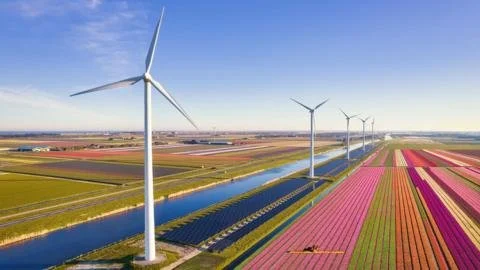Power Struggles: The Netherlands Faces Grid Congestion Amid Renewable Energy Boom
In a bold call to action, the Dutch government launched a campaign titled ”Flip the Switch” to encourage citizens to reduce electricity consumption during peak hours—specifically between 4 PM and 9 PM—to prevent grid overloads. This initiative underscores a significant challenge facing the Netherlands, a leader in renewable energy but now grappling with urgent grid congestion issues.
The country has made tremendous strides in renewable energy adoption, notably in solar and wind. The Netherlands boasts the highest number of electric vehicle charging points per capita in Europe and has seen over one-third of its homes fitted with solar panels. Moreover, there’s an ambitious plan to rely primarily on offshore wind farms for energy by 2030. However, this transition from traditional gas reserves to renewable sources has strained the infrastructure originally designed for a different era of energy production.
Kees-Jan Rameau, chief executive of Eneco, explained that the existing grid was built for large, centralized power plants, leading to congestion as smaller local lines struggle to manage the high influx of power from dispersed renewable sources. This new dynamic can be akin to traffic jams within the energy grid, causing electricity supply to outpace the grid’s ability to distribute it effectively.
The situation has forced many consumers and businesses to face substantial waiting lists for new power connections, inhibiting growth and development. Currently, 8,000 companies are awaiting approval to connect to the grid, with 12,000 more seeking to increase their power usage, leading to warnings from sectors like the Dutch chemical industry that grid congestion threatens future expansion.
Experts like Damien Ernst emphasize the costly implications of failing to invest in grid infrastructure, indicating that the Netherlands is experiencing a widespread grid crisis compounded by insufficient investment in distribution and transmission networks.
In a bid to address these challenges, Tennet, the agency responsible for the national grid, has announced plans to invest €200 billion in new infrastructure, including laying 100,000 km of cables by 2050. However, the protracted timeline for these projects—averaging about 10 years—puts additional pressure on an already overstressed grid.
Moreover, a recent report estimates that grid congestion is costing the Dutch economy up to €35 billion per year, highlighting the urgent need for effective solutions. The Ministry for Climate Policy and Green Growth acknowledged the oversight in underestimating the surge in electricity demand and is currently pursuing legislative adjustments to expedite grid expansion permits as part of a National Grid Congestion Action Plan.
In the meantime, campaigns like Flip the Switch are designed to manage immediate consumption pressures while the infrastructure struggles to catch up with the rapid scaling of renewable energy sources. As the Netherlands navigates this transition, the balance between fostering green energy growth and maintaining a reliable power supply remains a critical challenge.

